
The Gaza ceasefire held in its second day as tens of thousands of Palestinians returned to their neighbourhoods on Saturday and Israelis cheered Monday’s expected release of the remaining hostages.
“Gaza is completely destroyed. I have no idea where we should live or where to go,” said Mahmoud al-Shandoghli in Gaza City as bulldozers clawed through the wreckage of two years of war.
Nearby, a boy climbed a shattered building to raise the Palestinian flag.
Israelis applauded US President Donald Trump, and some booed Prime Minister Benjamin Netanyahu, as US envoy Steve Witkoff and Mr Trump’s son-in-law, Jared Kushner, addressed a weekly rally in Tel Aviv that many hoped would be the last.
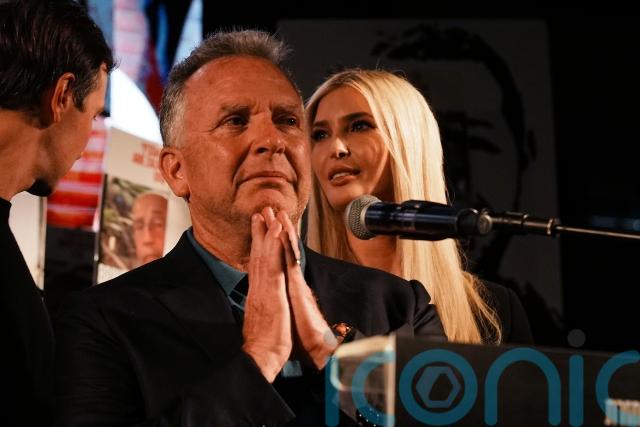
“To the hostages themselves, our brothers and sisters, you are coming home,” Mr Witkoff told the crowd estimated in the hundreds of thousands.
Mr Kushner said they would celebrate on Monday, when Israel’s military has said the 48 hostages still in Gaza would be freed. The government believes around 20 remain alive. Mr Kushner also noted the “suffering” in Gaza.
Israelis hugged and took selfies and many waved US flags.
“It’s a really happy time, but we know that there are going to be some incredibly difficult moments coming,” said one person in the crowd, Yaniv Peretz.
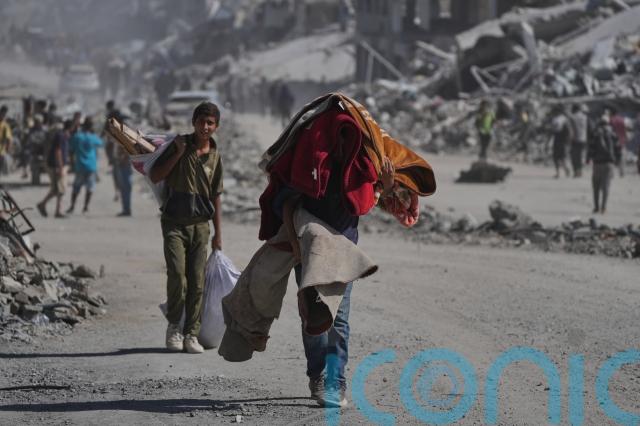
About 200 US troops arrived in Israel to monitor the ceasefire with Hamas.
They will set up a centre to facilitate the flow of humanitarian aid as well as logistical and security assistance.
“This great effort will be achieved with no US boots on the ground in Gaza,” Admiral Brad Cooper, the head of the US military’s Central Command.
Mr Witkoff, Mr Kushner and Admiral Cooper met senior US and Israeli military officials in Gaza on Saturday.
The Egyptian presidency in a statement late Saturday said Mr Trump will co-chair a “peace summit” there on Monday on Gaza and the wider Middle East.
Earlier, France confirmed that President Emmanuel Macron would visit Egypt on Monday.
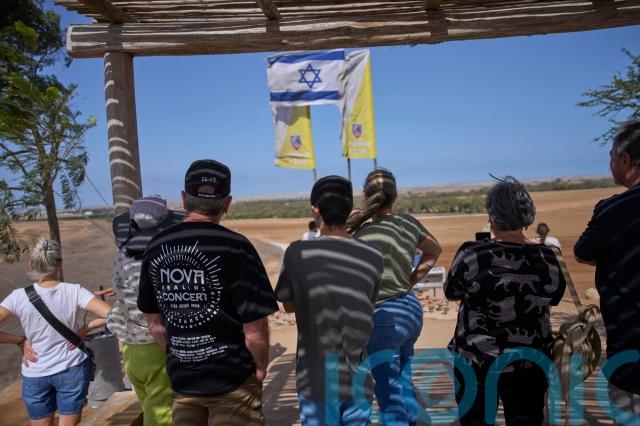
A copy of the signed ceasefire says Hamas must share all information related to any bodies of hostages that are not released within the first 72 hours, and that Israel will provide information about the remains of deceased Palestinians from Gaza held in Israel.
The photo of the document was obtained by the Associated Press and its veracity was confirmed by two officials, including one whose country was a signatory.
Hamas and Israel will share the information through a mechanism supported by mediators and the International Committee of the Red Cross (ICRC). It will also ensure all hostages are exhumed and released.
The agreement says mediators and the ICRC will facilitate the exchange of the hostages and prisoners without public ceremonies or media coverage.
Israel is to free some 250 Palestinians serving prison sentences, as well as around 1,700 people seized from Gaza in the past two years and held without charge.
Aid groups urged Israel to reopen more crossings to allow aid into Gaza.
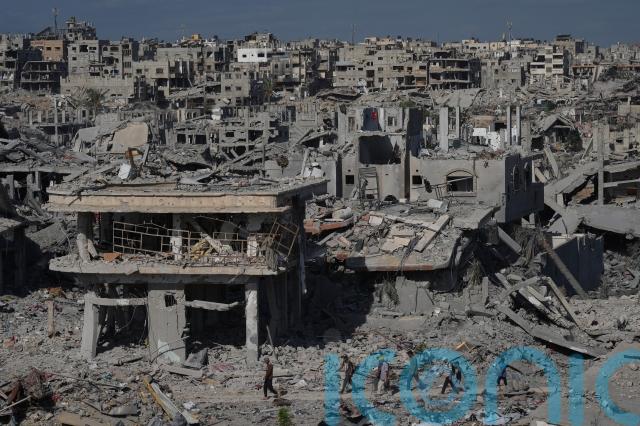
A UN official, speaking on condition of anonymity to discuss details not yet public, said Israel has approved expanded aid deliveries, starting Sunday.
The World Food Programme said it was ready to restore 145 food distribution points across the famine-stricken territory, once Israel allows for expanded deliveries. Before Israel sealed off Gaza in March, UN agencies provided food at 400 distribution points.
Though the timeline and how the food will enter Gaza remain unclear, the distribution points will allow Palestinians to access food at more locations than they could through the US and Israel-backed Gaza Humanitarian Foundation, which had operated four locations since taking over distribution in late May.
Some 170,000 metric tons of food aid have been positioned in neighbouring countries awaiting Israeli permission.
Questions remain on who will govern Gaza after Israeli troops gradually pull back and whether Hamas will disarm, as called for in the ceasefire agreement.
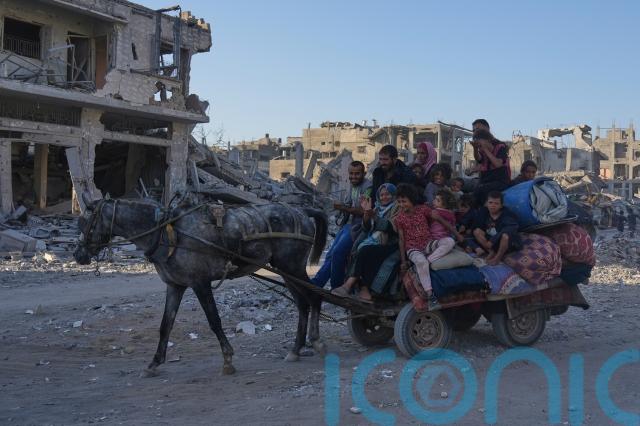
Mr Netanyahu, who unilaterally ended the previous ceasefire in March, has suggested Israel could resume its offensive if Hamas fails to disarm. He has pledged that the next stage would bring Hamas’s disarmament.
The scale of Gaza’s destruction will become clearer if the truce holds. And the death toll is expected to rise as more bodies are found.
A manager at northern Gaza’s Shifa Hospital told the Associated Press that 45 bodies pulled from the rubble in Gaza City had arrived over the past 24 hours. The manager said the bodies had been missing for several days to two weeks.
Mr Trump’s initial 20-point plan calls for Israel to maintain an open-ended military presence inside Gaza, along its border with Israel.
An international force, comprised largely of troops from Arab and Muslim countries, would be responsible for security inside Gaza, though the timeline is unclear.
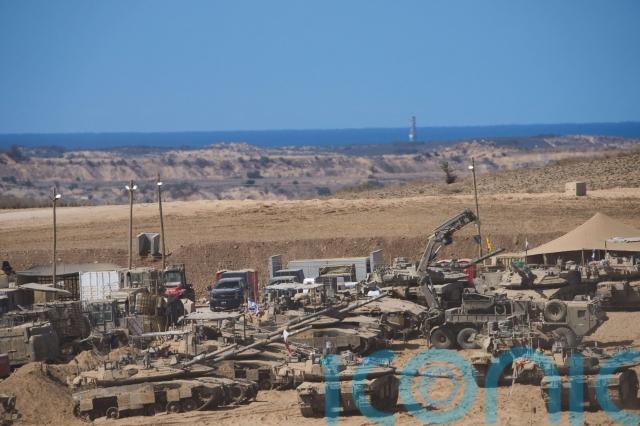
Egyptian President Abdel-Fattah el-Sissi on Saturday called for the Gaza deployment of an international force authorised by the UN Security Council.
The Israeli military has said it will continue to operate defensively from the roughly 50% of Gaza it still controls after pulling back to agreed-upon lines.
Mr Witkoff told Israeli officials on Friday that the United States would establish a centre in Israel to co-ordinate issues concerning Gaza until there is a permanent government, according to a readout of the meeting by a person who attended it and obtained by the AP.
The war began when Hamas-led militants stormed into Israel in the 2023 attack, killing some 1,200 people.
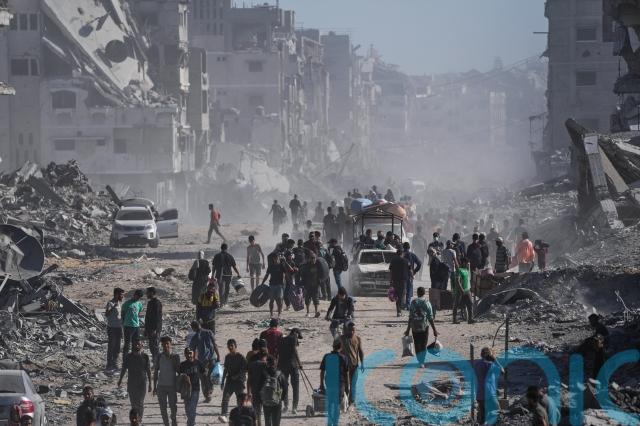
In Israel’s ensuing offensive, more than 67,000 Palestinians have been killed in Gaza and nearly 170,000 wounded, according to Gaza’s Health Ministry, which does not differentiate between civilians and combatants but says around half the deaths were women and children.
The ministry is part of the Hamas-run government, and the UN and many independent experts consider its figures to be the most reliable estimate of wartime casualties.
The war has also triggered other conflicts in the region, sparked worldwide protests and led to allegations of genocide that Israel denies.
Subscribe or register today to discover more from DonegalLive.ie
Buy the e-paper of the Donegal Democrat, Donegal People's Press, Donegal Post and Inish Times here for instant access to Donegal's premier news titles.
Keep up with the latest news from Donegal with our daily newsletter featuring the most important stories of the day delivered to your inbox every evening at 5pm.